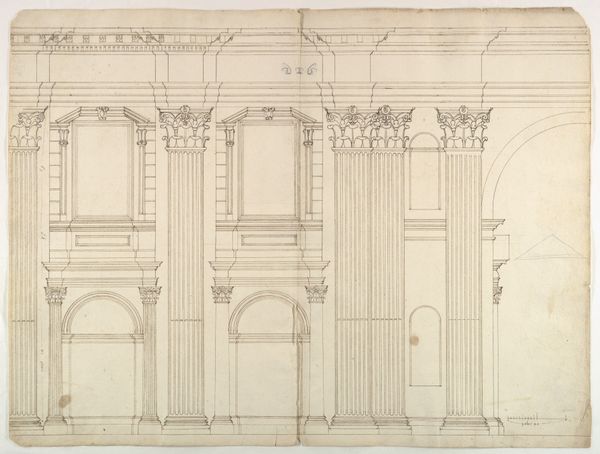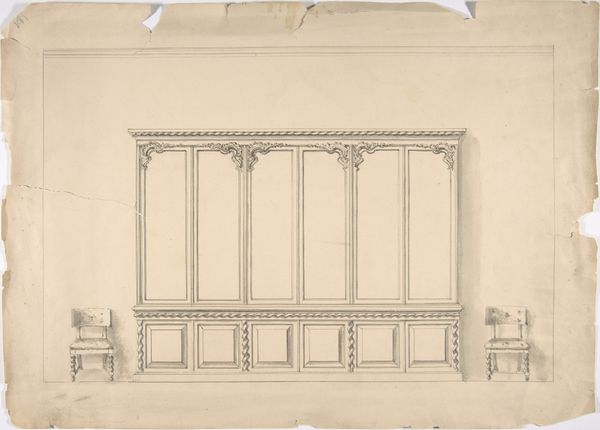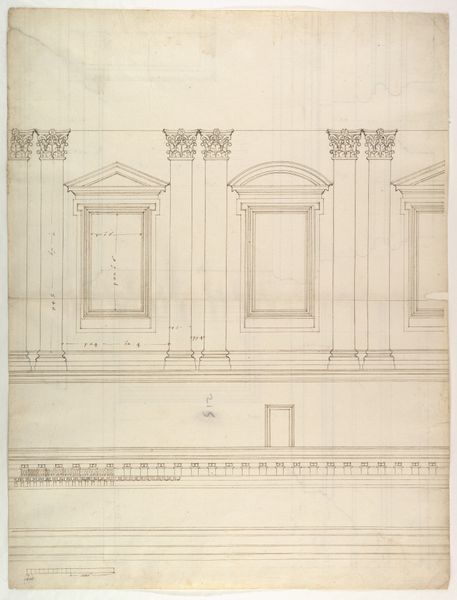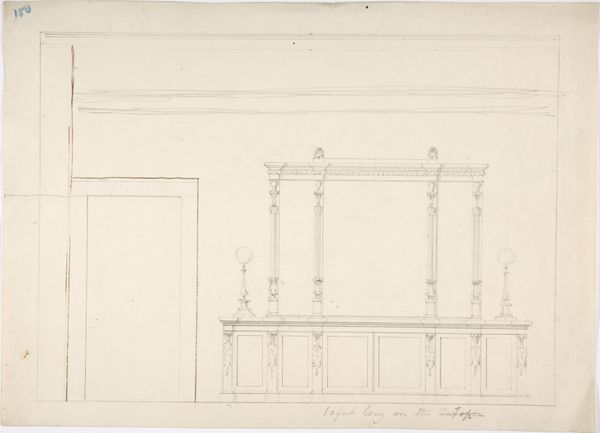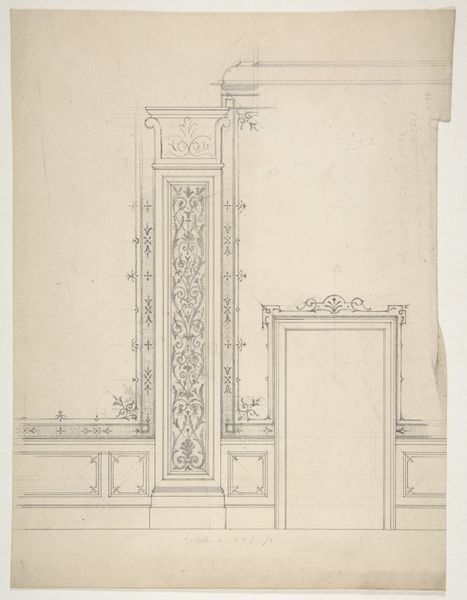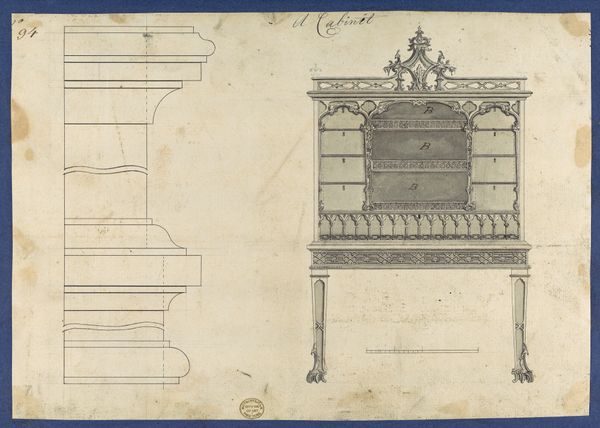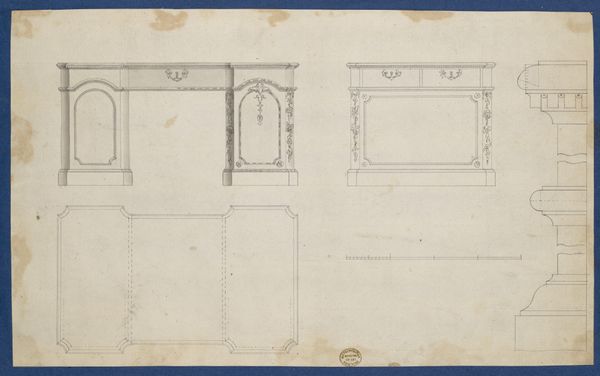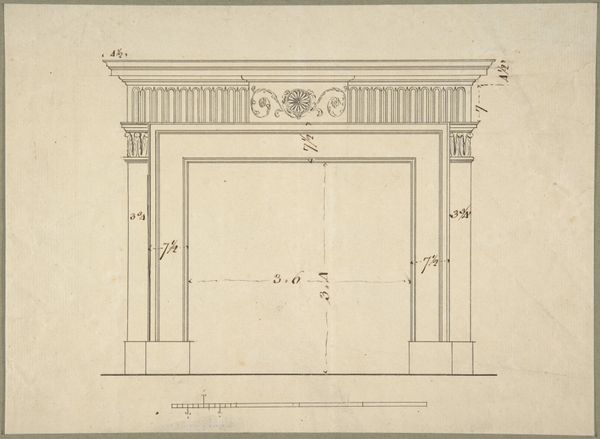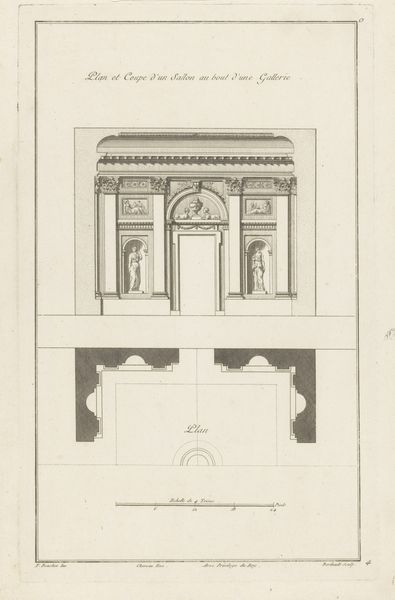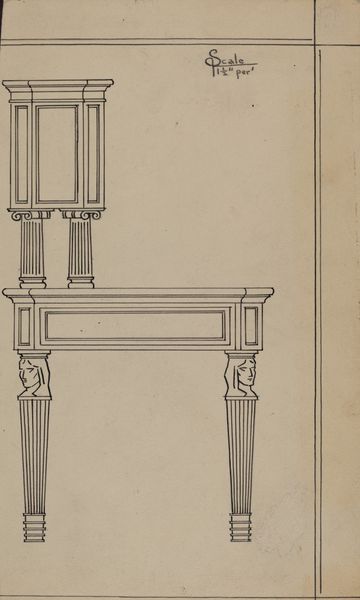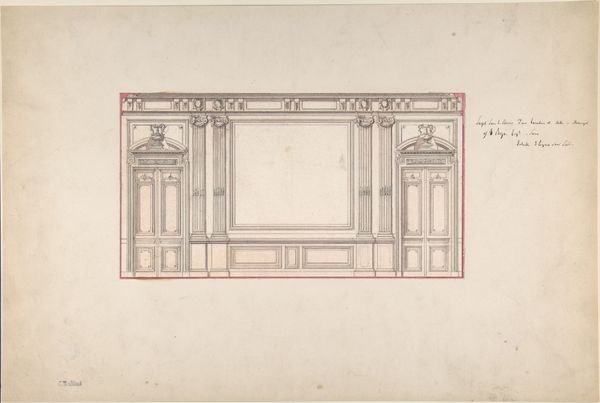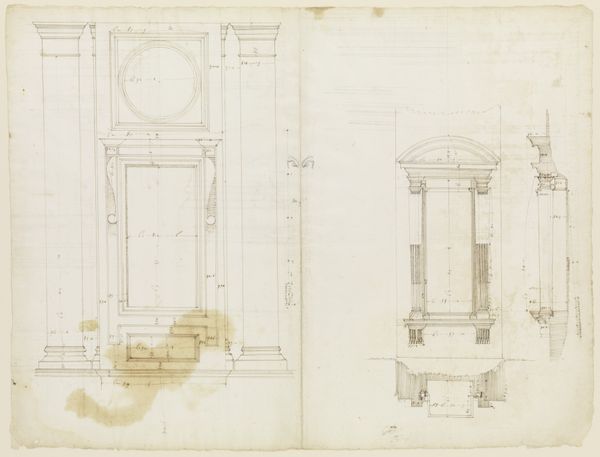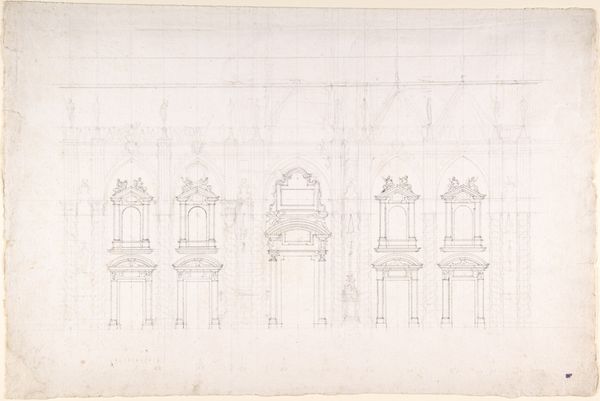
drawing, architecture
#
drawing
#
geometric
#
line
#
architecture
Dimensions: overall: 21.1 x 25.4 cm (8 5/16 x 10 in.) Original IAD Object: 81"high; 62 1/2"wide
Copyright: National Gallery of Art: CC0 1.0
Editor: So this drawing, "Kas," is from around 1938, by Lorenz Rothkranz. It appears to be a plan for an architectural element or furniture, created with ink, probably for construction or design. It feels very technical and precise, yet something about it gives it a certain austere beauty. How do you read this work? Curator: Looking at this piece, I see the intersection of craftsmanship, design, and social status. Furniture like this ‘kas,’ typically a large wardrobe, would have been a significant investment, signaling stability and taste in a household. The geometric embellishments—the diamonds and careful paneling—speak to the artistry involved, yet the drawing itself acts as a template for potential commodification. It highlights how art gets interwoven with domestic culture and aspiration. Where do you think this drawing would have lived? Editor: Probably tucked away in the office of a carpenter or architect, more function than art piece at the time? Curator: Precisely. It served the function of transferring design ideals to physical production. The lines are more than aesthetic; they are instructions for a specific kind of social ordering—displaying one's place in the world through material possessions. What does its technical drawing style suggest to you? Editor: Maybe it shows a shift towards mass production or at least more standardized methods, especially with the precision? But seeing it in a museum now, it is elevated to something more. It raises questions about accessibility of design, right? Curator: Exactly. This elevates the discussion beyond mere aesthetics and delves into cultural values attached to objects and how societal shifts affect artistic mediums. The drawing shows the socio-economic status of a specific era, where carefully made objects dictated lifestyle, whilst now, this design could exist without the burden of displaying affluence. Editor: That really reframes it. Seeing it now not just as a drawing but as a reflection of past societal structures helps me to view design and art much more broadly. Thanks! Curator: My pleasure! It’s these multilayered interpretations that give these drawings so much depth.
Comments
No comments
Be the first to comment and join the conversation on the ultimate creative platform.
